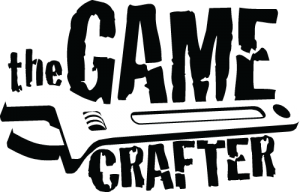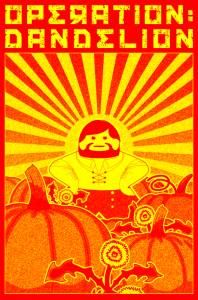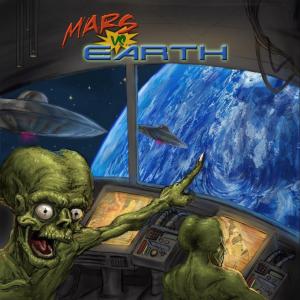The Game Crafter Opens Voting for their Big Box Challenge
06 Jun
Posted by Rob Kalajian as Card Games, Modern Board Games
 Community Voting has now started in The Game Crafter’s Big Box Challenge contest. There’s 56 total entries that need to be looked over, voted on, and finally trimmed down to 20 semi-finalists.
Community Voting has now started in The Game Crafter’s Big Box Challenge contest. There’s 56 total entries that need to be looked over, voted on, and finally trimmed down to 20 semi-finalists.
The Big Box Challenge was a fairly open contest this time around, with the rules as follows:
We want you to design a completely unique big box game. We’re not limiting theme or mechanics with this challenge. It is as free form as it gets. There are only a few requirements: It must use a large retail box, it must play between 1 and 2 hours, and it must have a cost of at least $30 and not more than $60.
Voting will last for the next five days.
I haven’t gotten through all the entries yet, but there’s certainly some great looking games in the bunch.
- Comments Off on The Game Crafter Opens Voting for their Big Box Challenge
 There’s something satisfying about pushing The Big Red Button, and Super Weapon knows it. Designer Chris Fong has created a delightfully light and simple game where the whole point to prep and launch your own weapon of mass destruction against other players. This is done by rolling the dice and matching them to your weapon’s launch codes, two randomly drawn cards attached to your weapon. Once you have your codes you can deal damage to an opponent and sometimes even active other special effects. You then discard your codes and draw two new ones.
There’s something satisfying about pushing The Big Red Button, and Super Weapon knows it. Designer Chris Fong has created a delightfully light and simple game where the whole point to prep and launch your own weapon of mass destruction against other players. This is done by rolling the dice and matching them to your weapon’s launch codes, two randomly drawn cards attached to your weapon. Once you have your codes you can deal damage to an opponent and sometimes even active other special effects. You then discard your codes and draw two new ones.
 That’s the game at its most simple. There’s also agent cards you can draw and play that provide special actions to take. Sometimes it’s copying a die number. Sometimes it’s disarming a code off an opponents cards. Each is different, and each provides a bit more depth to play. In the end, the last player standing wins.
That’s the game at its most simple. There’s also agent cards you can draw and play that provide special actions to take. Sometimes it’s copying a die number. Sometimes it’s disarming a code off an opponents cards. Each is different, and each provides a bit more depth to play. In the end, the last player standing wins.
Like I said earlier, the game is very simple and very light. That in no way, shape, or form diminishes how fun and satisfying it is to play. My only complaint is that being a Game Crafter game, it’s a bit pricey for what you get, coming in at $36. If they could get that price down a bit I’d say this one would be a must-buy.
- Comments Off on CT FIG—Super Weapon
 You may remember me posting about Avoid the Void, Geek Fever Games’ chaotic sci-fi game, shortly after PAX East this year. It ended up falling a bit short on its Kickstarter campaign, but Geek Fever has another way to get the excellent game into players’ hands. Avoid the Void is now currently up for Crowd Sale on The Game Crafter. For the next 7 days you can pre-order the game starting at $42. The more people who pre-order it, the lower the price gets. If 100 people pre-order, the price will only be $30.
You may remember me posting about Avoid the Void, Geek Fever Games’ chaotic sci-fi game, shortly after PAX East this year. It ended up falling a bit short on its Kickstarter campaign, but Geek Fever has another way to get the excellent game into players’ hands. Avoid the Void is now currently up for Crowd Sale on The Game Crafter. For the next 7 days you can pre-order the game starting at $42. The more people who pre-order it, the lower the price gets. If 100 people pre-order, the price will only be $30.
I’ve enjoyed all the games I’ve played from Geek Fever, but Avoid the Void is one of my favorites. I’ve already pre-ordered my copy, so I’m hoping more people will to knock my out-of-pocket down a bit.
If you’re on the fence you can check the game out for free on Tabletop Simulator. Just head on over to the Steam page to subscribe to the module.
- Comments Off on Geek Fever Games Avoid the Void Crowd Sale
Alisha Volkman’s Underlings of Underwing won The Learning Game Challenge from The Game Crafter earlier this year, earning it the right to be considered for publication by The Pericles Group. It’s a worker placement game where you’re trying to hatch dragon eggs using colored crystals. TPG is currently running a Kickstarter campaign to fund publication of the game.
I’ve gotten a chance to play Underwing and, even though it’s a light worker-placement game, I was surprised how meaty it actually felt. There’s plenty of choices to make on how you want your workers spending their time. Workers can be placed in the fields to collect gems each turn, moving forward on the track if left to their own devices. Workers can be placed in the tower to get a White gem, but must return to the break room after, effectively taking them out of a round. Workers can also be placed on an egg to claim it for a player for points and a positive buff when it hatches.
That brings me to another cool part of the game. Dragons can be hatched in the wild, meaning no one has claimed them when their gem slots are filled. These dragons stay on the board blocking the space they’re in and triggering a negative action. If the board fills up with wild dragons it’s game over. Sometimes these wild dragons will cause other wild dragons to hatch, setting off nasty chain reactions with heavy consequences.
Hatching isn’t a simple as it seems on the surface. Each dragon requires gems to hatch. Gems come in 8 colors: primary colors: Red, Yellow, and Blue, secondary colors: Orange, Green, and Purple, and Black and White. Primary colors can be mixed to create gems of secondary colors. One of each primary color or secondary color can be mixed to create a Black gem. White gems can only be obtained through a random draw from the gem back, or from placing a worker in the tower. This mechanic gives players a lot of flexibility when infusing eggs, but requires careful planning with your workers to be effective.
The game ends after a set number of rounds depending on the number of players. At the end of the game dragons are scored to determine the victor.
My kids and I really enjoyed Underwing, especially my 9-year-old daughter. The game states ages 12+ on the box, but my 6-year-0ld had no trouble playing after a few rounds with a little help. I’m really looking forward to what a full, professionally printed copy will look like, and I can’t wait to get my hands on one. Until then, I’m sure we’ll wear out this prototype copy that I have.
There’s a lot of game in Underwing’s tiny box, and a $29 pledge will guarantee you once excellent game when the project funds. There’s only one mystery stretch goal right now, but I have a feeling we’ll see that revealed soon. There’s also an add-on play mat, which I don’t currently have, that looks amazing.
If you’re interested in learning more about the game, check out the Kickstarter page or watch the How-to-Play video below.
A prototype version of Underlings of Underwing was provided free by The Pericles Group for this preview.
- Comments Off on Kickstarter Preview—Underlings of Underwing
 “Who are we? Where are We from?”
“Who are we? Where are We from?”
I first saw Aurora at CT FIG 2016 while playing Elements at the Rampage Games booth. Not having time to play that day, Rampage sent me a copy of my own to checkout. I finally had a chance to sit down and play with my kids, and was surprised what a competent little set collection game it is.
Aurora is a game about creating star systems that can support sentient life. It was a submission to The Game Crafter’s Learning Game Challenge, and made it to the finals.
Each round you’re creating or expanding star systems trying to meet all the requirements for intelligence. Every card in your star system also provides a certain amount of either Water, Carbon, or Oxygen. Building your levels of these resources earn you bonuses throughout the game. There’s also event cards that can be played to help yourself or hinder other players. Once a round is over you can save up to three cards, pass the rest to the player on the left, then draw up to 6 cards for a max hand size of 8. Play continues until either one person develops intelligence, has life in three star systems, or maxes out their resource tracks. It plays in about 30 minutes, and the kids and I had a blast while playing.
 There are a few pitfalls, though. The rules aren’t as clear as they could be, and make the game seem a bit more complicated than it really is. Also, the colors on some of the components, especially the reference guide and rule book, blend a bit and make the text hard to read in some areas. Overall these aren’t really deal breakers, but are items that can be fixed to make Aurora a much more solid package.
There are a few pitfalls, though. The rules aren’t as clear as they could be, and make the game seem a bit more complicated than it really is. Also, the colors on some of the components, especially the reference guide and rule book, blend a bit and make the text hard to read in some areas. Overall these aren’t really deal breakers, but are items that can be fixed to make Aurora a much more solid package.
Aurora packs a lot of game into a deck of cards. Between the multiple paths to victory and drafting mechanics, it provides a good amount of depth is a short period of time. It’s also easy enough to play with kids. My 6-year-old was able to grasp the game well enough to play on his own after a few rounds, and my 9-year-old pulled out a surprise victory by developing intelligence on our first play of the game.
A copy of Aurora was provided free for review by Rampage Games.
- Comments Off on Second Look—Aurora
 Stygian is a strategic, Lovecraftian, dungeon crawl that recently went up on The Game Crafter. Stuck in a nightmarish dungeon, players must find the silver key, and make their way to the gate to escape. Along the way they’ll have to content with traps, other players, and all sorts of other horrors. If they die, the come back as a dread horror and can’t resume their escape until they feast upon the flesh of another player.
Stygian is a strategic, Lovecraftian, dungeon crawl that recently went up on The Game Crafter. Stuck in a nightmarish dungeon, players must find the silver key, and make their way to the gate to escape. Along the way they’ll have to content with traps, other players, and all sorts of other horrors. If they die, the come back as a dread horror and can’t resume their escape until they feast upon the flesh of another player.
Stygian contains no dice or value trackers, just cards and tiles. It’s supposed to be fluid and easy to pick up, yet satisfying enough for mid/hardcore level gamers.
The game looks pretty great, and can be purchased for $49.99.
- Comments Off on STYGIAN Hits The Game Crafter
We’re nearing the end of the year and are just before the Christmas holiday, a time when gamers around the world are spending money on gifts for loved ones and themselves. Why then, would one think this week — of all weeks — is a good time to launch or run a limited-time crowdfunding campaign? As I scroll through the games section of Kickstarter there’s not much on there this week. There’s something whose only description is “the card game that will save mankind”, more Cards Against Humanity knockoffs, and several other gamelike offerings that have less than 7% funding (and it’s rather surprising that some of them have that much pledged).
The week before Christmas really doesn’t seem to be a good time for Kickstarter campaigns.
Instead, let’s look at Patreon, where you can sign up for a monthly payment of however much you want to let someone create a thing. Kickstarter seems to be more of a pre-order system for stuff, no matter how much KS tries to deny it. Patreon comes across as a gift of thanks to a creator.

Tabletop Audio is creating ten minute “audio ambiances” for tabletop RPGs and boardgames. Want a soundtrack for your game night? Give Tabletop Audio a try. The audio at the site is free, but you can show appreciation at the Patreon page in the form of money.
Gareth Graham has a video series where he covers unboxing videos, game overviews, and tutorials. While there are only a few tutorials in that lineup, two that stood out for me were tutorials about using BoardGameGeek and navigating The Game Crafter. Take a look at his YouTube channel and support him at his Patreon page.

Perhaps you’re into wargames? Mike at TerranScapes has a fantastic video series about creating wargaming terrain. (Also good for RPGs!) Several milestones have already been met which have upgraded his recording studio. Visit the site; throw a buck or two at the Patreon.
John Wick has a gaming ‘zine he publishes called Wicked Worlds! Magazine. Included are Play Dirty (GM advice, Wick-style), adventures, fiction, little games, and/or whatever else John wants to discuss each month (or thereabouts). Check it out!
- Comments Off on Crowdfunding Highlights
Three Game Design Competitions
10 Dec
Posted by David Miller as Card Games, Electronic Games, Modern Board Games
 Cardboard Edison, which does a fantastic job of collecting game design and publishing advice, has in this case collected 35 judges (publishers, reviewers, and designers) to evaluate “engagement and originality” and bestow The Cardboard Edison Award on one unpublished board game. Though prototypes will only be required of those designs that make it to the second stage of evaluations, anyone wishing to participate must pay a $5 fee. There is no prize for winning. Submissions are due January 31st and remain the property of their designers.
Cardboard Edison, which does a fantastic job of collecting game design and publishing advice, has in this case collected 35 judges (publishers, reviewers, and designers) to evaluate “engagement and originality” and bestow The Cardboard Edison Award on one unpublished board game. Though prototypes will only be required of those designs that make it to the second stage of evaluations, anyone wishing to participate must pay a $5 fee. There is no prize for winning. Submissions are due January 31st and remain the property of their designers.
Sponsored by The Pericles Group and hosted by The Game Crafter, the Learning Game Challenge seeks games “where a playful environment creates an opportunity for understanding real world problems and issues.” The audience doesn’t matter but the learning objectives must be clear. Entries must also be games newly uploaded to The Game Crafter specifically for the contest, and they have to be complete, publish-ready, with all components and packaging priced under $30. The winner retains all rights and will receive a $100 cash prize, $50 of shop credit, 100k crafter points, and showcase status. Entries are due February 29th.
Administered by Games for Change and sponsored by Transformance, the Pocket Change Game Design Challenge seeks submissions that “introduce the basic concepts of savings and outline what players need to start overcoming debt and building their wealth.” There’s a $10,000 prize. And while the Challenge is technically open, there is a stated preference for web-based games targeting young adults. The deadline for entries is January 22nd.
- Comments Off on Three Game Design Competitions

Back in June I had reported on Operation: Dandelion, a cooperative game where the players are weeding a garden. It seemed a bit weird to me with it’s obvious Soviet tones and game theme, but had snagged my interest.
I’m glad it did.
Operation Dandelion is played over 5 increasingly difficult rounds. Each round cards in a deck are turned over, and the modular garden starts to get overgrown with weeds. The goal of the players is to manage the weeds before the tiles become completely overgrown, or the weed tokens run out. It’s not as easy as it seems, because each player only gets a few actions per round, and can only perform them if their player card is drawn. To make it even harder, there’s only one card in the deck for each player, plus a shared action card. Oh yeah, the deck gets larger each round, too. There’s a bit of rescue in the form of Overtime cards. Each player gets a certain amount depending on the number of players, and they can be played for more actions.
 I played this one with my 10-year-old and 5-year-old. At first I was a bit dissappointed. The game seemed far too easy, and we had no trouble at all keeping the weeds under control. Then the 5th round arrived, and we quickly lost control of things. The board started to fill with weeds, and it was only through pure luck that we can out with a win…with a really low score. Overall we had a great time, and are looking forward to this hitting the table again.
I played this one with my 10-year-old and 5-year-old. At first I was a bit dissappointed. The game seemed far too easy, and we had no trouble at all keeping the weeds under control. Then the 5th round arrived, and we quickly lost control of things. The board started to fill with weeds, and it was only through pure luck that we can out with a win…with a really low score. Overall we had a great time, and are looking forward to this hitting the table again.
Operation: Dandelion plays 2-4 players in around 30 minutes. Cooperation really plays a key roll in this one, and there will be plenty of time where you’re all trying to figure out the best actions to take so you don’t lose a tile, or take the last few weeds from the pile. There’s also an expansion, Morning Sun, which adds variable player powers and other mechanics that can be added into the game. We haven’t tried that yet, but will be the next time we play.
Farm on, Comrade!
A copy of Operation: Dandelion was provided free for review my Michael Groll’s Games.
- Comments Off on Second Look—Operation Dandelion
 Martians are attacking an alternate-reality 1950’s Earth, and it’s up to you to stop them…or is it?
Martians are attacking an alternate-reality 1950’s Earth, and it’s up to you to stop them…or is it?
Mars vs Earth is a 3-10 player cooperative game where you’re trying to stop aliens from invading and taking over Earth. The thing is, the Martians have replicated human DNA, and their clones walk among us. In traditional cooperative game fashion, that means there may be one or more traitors in the midst.
Over the course of several rounds new challenges will arise and players must pool their resources to stop them. The game has a cool mechanic where players can only play so many cards to a challenge depending on how far they’re sitting from the current mission leader. Players directly to the left and right of the leader can play more than those sitting 2 or 3 seats away on either side.

The game ends when the humans foil a pre-determined number of Martian threats, or the Martians deplete all the human resources. It’s a relatively fast paced card game, playing in 30-60 minutes. Having played with a max of 4 players, our games tended to run 30-40 minutes. All my game-age kids tested this one with me, and had a great time with it. My 5-year-old needed a bit of help with text, and when he turned out to be working against the other players, but still really got into it. We actually ended up taking the game camping with us, and it worked out really well as a portable game without the board.
Overall this is a great co-op that I can enjoy with my kids. The 1950’s sci-fi feel, and the tense nature of the challenges make this a fantastic game in a short amount of time.
You can snag Mars vs Earth from The Game Crafter for $38.99.
Geek Fever Games is actually located near me in CT, and I’m hoping to get a chance to play the game with the designer soon.
A copy of Mars vs Earth was provided free for review by Geek Fever Games.
- Comments Off on Second Look—Mars vs Earth
Trending
- Massdrop.com
- Oh the Irony—Illuminati Card Game Continues to Inspire Conspiracy Theorists
- Home
- Footprints, an Educational Ecology Game
- USPS Adds Board Game Flat Rate Box
- Baila, the Estonian Drinking Card Game
- Crystal Caste Wins Dice Patent Suit Against Hasbro
- Mirror Game, Red and Blue
- Are Board Games Dangerous?
- The Truth About Dominoes On Sunday in Alabama
Archives
Most Popular Articles
- Oh the Irony—Illuminati Card Game Continues to Inspire Conspiracy Theorists
- The 20 Most Valuable Vintage Board Games
- The Truth About Dominoes On Sunday in Alabama
- Sequence Game, and Variants
- USPS Adds Board Game Flat Rate Box
- Baila, the Estonian Drinking Card Game
- The 13 Most Popular Dice Games
- Are Board Games Dangerous?
- Guess Who? The Naked Version
- What Happened to the Jewel Royale Chess Set?
Recent Posts
- Toy Fair 2019—Breaking Games
- Talisman Kingdom Hearts Edition
- Toy Fair 2019—Winning Moves
- Toy Fair 2019—Games Workshop
- Toy Fair 2019—Star Wars Lightsaber Academy
- Toy Fair 2019—Stranger Things Games
- Toy Fair 2019—HABA
- Licensing Roundup
- Game Bandit
- 2018 A Difficult Year For Hasbro But Not For D&D Or MtG
Recent Comments
- on Toy Fair 2019—Winning Moves
- on Game Bandit
- on Second Look—Dungeons & Dragons Waterdeep Dragon Heist
- on Crowdfunding Highlights
- on Beyblade SlingShock
- on Game Bandit
- on Game Bandit
- on Watch This Game!, the Board Game Review Board Game
- on Second Look—Vampire: The Masquerade 5th Edition
- on Palladium Books Loses Robotech IP License, Cancels Five-Year-Overdue Robotech RPG Tactics Kickstarter



